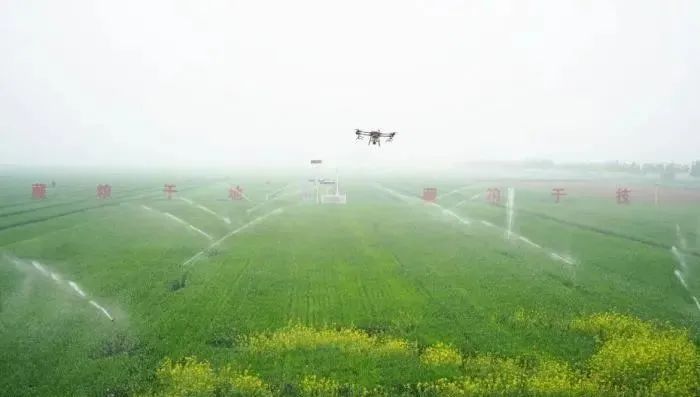Nielsen IQ: China Fast Condornean offline physical retail still accounts for 60%, products, scenes, and management iterative acceleration
Author:Economic Observer Time:2022.09.16

Economic Observation Network reporter Li Xiaodan on September 15, Nielsen IQ released a report on "The Rhythm of Chinese Retailing Chinese Retail", showing that despite the repeated impact of the epidemic, the physical retail industry has a large pressure. Sports retail still accounts for 60%; of which, modern channels mainly mainly in hypermarkets, large supermarkets, small supermarkets and convenience stores account for 29%, and traditional channels represented by food miscellaneous shops account for 23%. It is only 2%, but an increase of 51%over January 2019.
Song Yan, managing director of Nielsen IQ China, said that in the past few years, the retail industry in China has undergone tremendous changes. With the development of mobile Internet technology, the gradual improvement of the product supply chain, and the development of logistics distribution services, retail companies are in product and consumer scenarios. Even management and other aspects have undergone tremendous changes.
Follow "Modern Chain Store" and "Transformation Independent Store"
The Nielson IQ has defined the original modern and traditional channels. It has newly increased the channels such as "modern chain stores" and "transformation of independent stores" to further enhance data granularity to reflect the most authentic market picture. Among them, the "modern chain store" refers to a chain -type modern channel store. The number of shops in 2021 was 150,000, compared with the 2019 growth rate of 14%. The "transformation of independent stores" refers to modern transformation of non -chain stores, including non -chain small supermarkets and large -scale miscellaneous shops. The number of shops in 2021 is 300,000 and 1.11 million, respectively. Compared with 2019, the growth rate is 27, respectively. %,8%.
The Ministry of Commerce issued a policy to promote the construction of the "15 -minute life circle" in 2021, empowering and accelerating the development of retail markets and low -line cities retail market development. The fit of consumer demand is conducive to the development of retail formats in small and medium -sized and community forms. This trend is also confirmed in the Nielson IQ report. The report pointed out that in the chain of modern channels, the development of hypermarkets and shrinking, small and medium -sized formats lead the growth of modern chains, among which convenience stores and chain supermarkets stand out. In 2021, the number of large chain large supermarkets increased by 14.3%year -on -year, and the number of convenience stores increased by 22.3%compared with 2019.
Small and medium -sized chain supermarkets and convenience stores relied on strong supply chain to empower, and centralized logistics systems ensure the richness and freshness of fresh products, as well as product price advantages, improve the shopping experience, etc., and quickly penetrate in high -line and low -line cities. Compared with 2019, the number of chain supermarkets and convenience stores in low -line cities in 2021 is as high as 24%; the growth rate of the number of stores in high -level cities is 18%, leading the overall growth of modern chain channels.
From the perspective of transformation of independent stores, non -chain small supermarkets and large -scale miscellaneous stores maintain a better growth momentum due to meeting real -time consumption needs. In 2021, the number of non -chain large -scale miscellaneous shops was 1.11 million, an increase of 8%over 2019.
From the perspective of its national development, focusing on coastal and populous provinces, the growth rate of the central and western provinces is growing rapidly. Among them, the number of stores in Guizhou, Yunnan, Jiangxi, Shandong, and Guangxi is the top 5 nationwide. The number of stores in Hebei, Shandong, Henan, Sichuan, and Guangdong ranked among the top 5, accounting for 43%of the total number of independent stores.
New opportunities for offline retail: digital transformation and modernization upgrade
The Nielson IQ report shows that at present, people's consumption habits and behaviors have changed. Modern chain channels provide better product selection (fresh category, self -owned brand, new consumer brand); richer shopping experience (convenient and fast, scene -based experience, comfortable environment); cross -platform (virtual and entity) prices and the price and entity price and the price and entity price and the price and entity price and the price and entity price and entity price and the price and entity price and entity price and the price and entity price and the price and entity price and the price and entity price and entity prices and entities Product comparison; O2O near -field shopping experience and distribution support for supply chain becomes particularly important.
Taking fresh products as an example, in the post -epidemic era, fresh products penetrated downward, and physical retail returned in an all -round way. 94%of the nationwide chain supermarket sales of fresh products in low -line cities increased from 90%in 2020 to 92%in 2021. More than 45%of consumers are willing to go to the new supermarket shopping, and more than 60%of consumers are affected by fresh meat and seafood factors when choosing a store.
At the same time, the O2O penetration rate of users/supermarket users reached 33%. In the low -line cities, O2O continued to penetrate. By increasing the investment of O2O, multi -channel integration and development.
In addition, because the boundary limit becomes more blurred, traditional food miscellaneous shops will usher in a comprehensive upgrade. According to the Nielson IQ study, the penetration rate of the E-POS system in large-scale miscellaneous shops increased from 14%in 2019 to 18%in 2021, with a growth rate of 24%, and the digital payment is more convenient. Large -scale mixed shops have refrigerated freezing equipment (86%in 2020). In addition, the average number of categories sold in large -scale miscellaneous shops (greater than 40 square meters) increased from 36 in 2019 to 43 in 2021, an increase of 19%; and because some e -commerce giants expand offline to B channels, it also promotes The food miscellaneous stores increased the sales of online celebrity products, imported foods, etc., which further enriched the type of product.
How can offline retailers seize the opportunities of future development and succeed in complex competitive environments?
Zhou Lingqing, senior vice president of Nielsen IQ China and the Asia -Pacific region, pointed out that for modern chain stores, the digital transformation of strong managed digital transformation is essential, that is, the use of the timeliness of O2O to promote the convenience of instant consumption scenarios.The quality and price advantage of fresh products.In addition, centralized management effectively ensures the quality of goods and services, improves the shopping experience, and provides effective guarantee for the real -time consumption of recent market time through longer business hours.For transformation of independent stores, it is necessary to create a modern upgrade of a strong experience.Zhou Lingqing said that first of all, through the upgrade of the richness of the product and the regular upgrading of the equipment and facilities in the store to promote the shopping experience; in addition, the faster and convenient digital code scanning and payment system and the optimization inventory management of the supply chain empowerment can effectively improve operating efficiencyEssence
- END -
Rizhao City arranges the deployment of autumn grain production related work
Live Live Rizhao August 25th On the afternoon of August 25, the city organized a video conference to watch the province's autumn grain production and three rural key work dispatching video conferenc...
Ministry of Agriculture and Rural: Strive to build a number of smart agricultural models for 3 to 5 years

According to the website of the Ministry of Agriculture and Rural Ministry, the Ge...